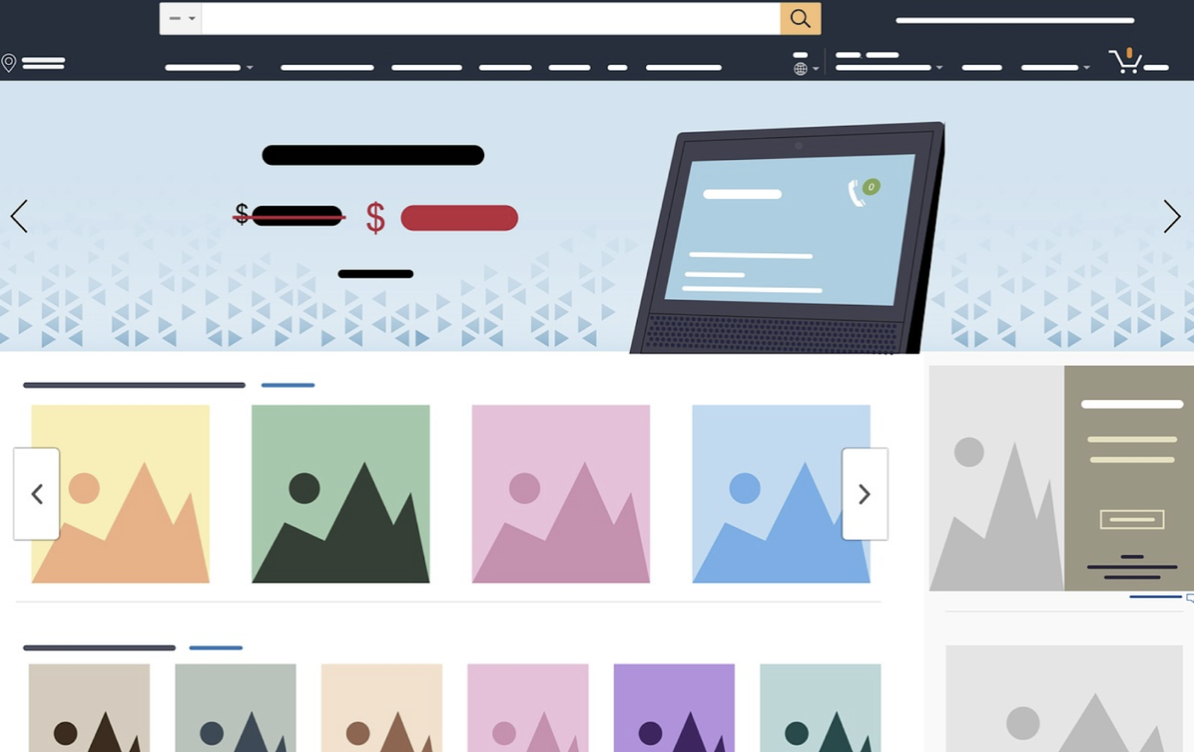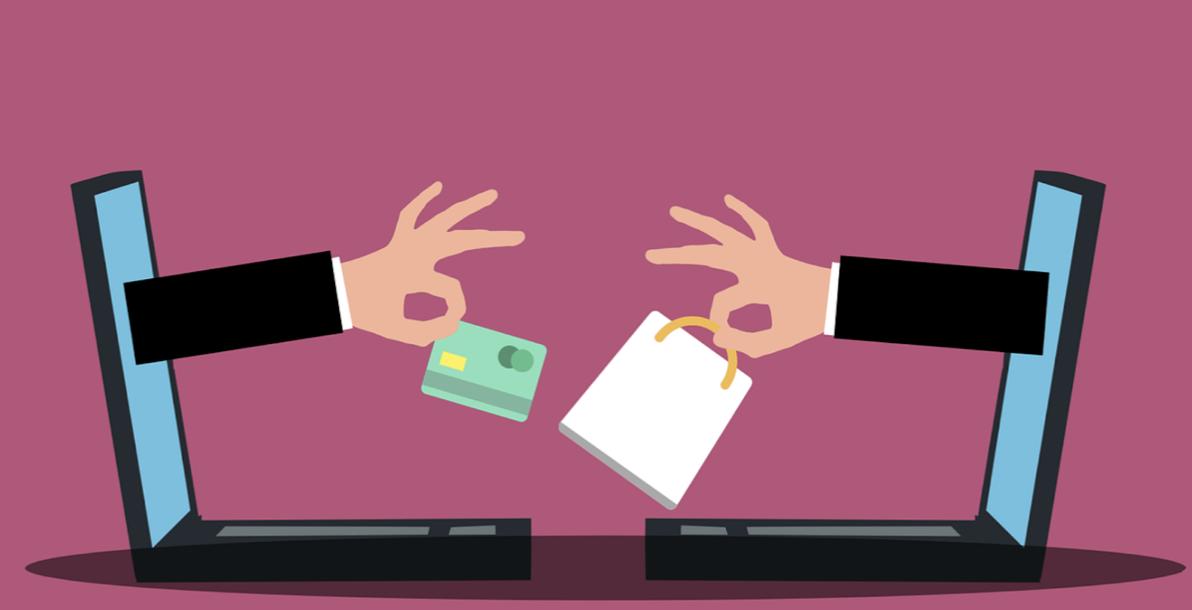The Ease Of Cross Border Trade And How To Get Started With It
Nov 15, 2021 | Sabina M Abul
 Here we will discuss about how easy it easy to engage in cross border trade as a business
Here we will discuss about how easy it easy to engage in cross border trade as a business Cross-border ecommerce is an essential component when it comes to growing your online business.
After you have been able to fully establish your online store in your domestic market, it may be time to explore growing your ecommerce business into other countries.
According to data, cross border ecommerce shopping is increasing with the pandemic reinforcing this increase and being a business, you should always ensure you are taking all the opportunities that are available in order to maximise profits.
But what is cross-border ecommerce and how do you start working on it?
Let’s first start by exploring cross-border ecommerce, what it is and why it is important.
WHAT IS CROSS-BORDER ECOMMERCE AND WHY IS IT IMPORTANT?
As defined by Google Market Finder, cross-border ecommerce is the “process of selling products or services via an Ecommerce website to buyers overseas”, in other words, for a business it means having an international ecommerce presence.
A study carried out by Visa found that 90% of ecommerce owners that were surveyed stated that global ecommerce presence will be critical to their business’s success by 2024.
The main reason why cross-border ecommerce is gaining more importance is, as previously mentioned, the rise in cross-border shopping due to cheaper prices. As more and more businesses are opening up to international markets, not joining in will only mean falling behind and losing out on profit.
Another reason why cross border ecommerce is beneficial and has always been beneficial for businesses is that it gives businesses the opportunity to sell certain products that are low in supply and have a high demand in other countries, but are easily accessible in the business’s home country due to raw material availability. As a consequence, if these businesses are able to access those markets, they are able to reach a high number of customers due to the high demand.
Cross-border trade can also be beneficial when a business’s home country is experiencing an economic crisis as, depending on the goods that are sold, demand for those goods will fall within the country but in countries not affected by the crisis it won’t fall, which will allow the business to still make some profits through international sales.
The good news is, cross-border ecommerce is pretty easy to do if you know the steps.
Technological advancements have led to greater transparency of the supply chain as it is easier to communicate with suppliers and information of the suppliers is more available to consumers. Along with this, transportation has drastically improved which has significantly decreased the number of days it takes for a product to be shipped to its destination.
These factors and also marketplaces such as Amazon, eBay and many others have considerably eased cross border trade compared to a few decades back.
But what are the steps and how can you get started with cross-border ecommerce?
Here are the steps you should take to get started:
Do some research on international markets

It is highly important to start by doing some research to analyse which markets you should tap into and which products to make available in those markets.
To do this, you could type up the product that you are thinking about selling on the Google Trends website and check whether the searches for that product are increasing in a specific country.
For instance, if you specialise in selling wireless headphones and you are considering selling them in the United States, you should search for the term and filter the location to United States on Google trends and you will see the online searches for the term as shown below:

As shown from the graph, it would not be a good idea to do so as although interest over time was rising a few years back in the US, it is now declining significantly.
Like this, you can keep searching the interest over time of specific products in different countries to see whether there is a market for your product in those countries.
Another thing that is worth doing when researching is carrying out a competition analysis and carry out a SWOT analysis of your competitors. This is important as it will help you finding gaps and also to build your entry strategy by identifying the prices, channels and terminologies you should consider when entering.
By the end of the research, you should be able to know the following:
• The list of countries where there is a high demand for the products you sell
• The countries that visit your website
• The competitors and what their strategy is (eg their prices, where they are listing their products etc)
• The taxes and regulations that you can expect from those countries
• Other products that are high in demand in other countries that you could also consider selling
• The shopping and marketing channels that are most in those countries
Make small steps and test the market

It is important to not go all in when you are starting and to just make small steps.
This could be done by allowing payments for different currencies or introducing international shipping.
Also, to start with, you can consider international marketplaces such as Amazon, eBay, AliExpress or Etsy.
This will be a good way to test the market and it will not require you to spend huge sums of money whilst giving you access to millions of global customers.
As these are all trusted and reputable marketplaces, reaching customers who will want to buy from you won’t be difficult.
In addition, chances are, you are probably already working in these platforms to reach your domestic audience which will also mean that you will already know how they work and you won’t have to do much to make yourself visible to the global audience.
3. Adapt your website, products, services, and content to those markets

It is important to then adapt certain elements of your brand to the markets that you are deciding to tap into.
For instance, you need to translate your website’s content if the country you are considering speaks another language and this would be best done by hiring native speakers of the specific countries as automated translation services are not fully accurate. These new people you have hired can also help you provide customer services to customers in those countries which will reduce the existing language barriers.
You could create a website tailored to each specific country that you are considering where you would have payments methods for each currency, respective shipping fees and taxes that you need to apply.
Most of the big brands have it. For example, when you go to H&M’s home page, you will see a list of hyperlinks for each country you want to shop from and each website is specific to each country as shown in the above image.
You should also consider different measuring options used in each country as product sizes are differently displayed in all countries.
It is also important to know about all the laws and regulations in place and the taxes and patents for each country that you need to be aware of when selling there, along with all the prohibited materials and product restrictions in those countries.
4.Offer a range of payment options

It is important to find the payment methods that your customers in those markets prefer to use as people’s payment preference changes according to each country.
This is really important as it can affect whether or not customers will decide to buy from you.
This is why it is recommended to have a variety of payment options available as well as the product price shown at the local currency to remove the fear of hidden charges due to currency conversions whilst ensuring the payment is easier to make.
5. Partner up with local shippers

Shipping costs are an important element to consider.
If customers feel like the shipping rate is not reasonable, they will not go on with the purchase, simple as that.
This is why a way of making sure you are offering the best shipping price is by partnering up with local shippers within each country. This will not only lead to a lower shipping price, but it will also decrease the time it takes for the items to be delivered to the customers.
Otherwise, you could consider dropshipping, whereby you purchase items you want to sell from a third-party supplier and have the products sent to the customers by the supplier directly.
6. Use social media and focus on mobile commerce

Social media is an essential component for businesses nowadays as it is used for marketing and advertising purposes by almost all businesses.
By using social media, you can increase your reach and increase your site traffic.
For instance, you can have different social media accounts for different countries where you post content relevant to each audience.
You could also find local social media networks that people use aside from the global channels like Facebook, Instagram or Twitter as a lot of countries have their own preferred social media platforms. For example, South Korea has developed its own popular social media platforms that are used the most.
In addition, as mobile commerce is increasing, it is important to not only have a website which is optimised for use in mobiles, but to also have a mobile app that will allow you to give the customer a more personalised experience and improve customer loyalty by providing points or discounts periodically.
When doing this, ensure the mobile app is available for downloading in the countries you are targeting.
CONCLUSION
In conclusion, these are the steps you should follow when opening up to cross-border trade.
As you can see, it is not as difficult as it seems. With the right plan and strategy, there is no reason why you won’t be able to succeed!
Now it’s the time to act by starting to research and slowly following each step to ensure you are not leaving anything out.
We hope this small guide helped you gain some more information and give you that push that you needed to start with international ecommerce trade.
Meanwhile, if you do not own an ecommerce business yet, check out this blog on the top reasons why you should consider opening one.
Alternatively, contact us to know more about us!
Recommended



Wholesale / B2b Kathputli Puppets From Ahemdabad
Dec 16, 2024





